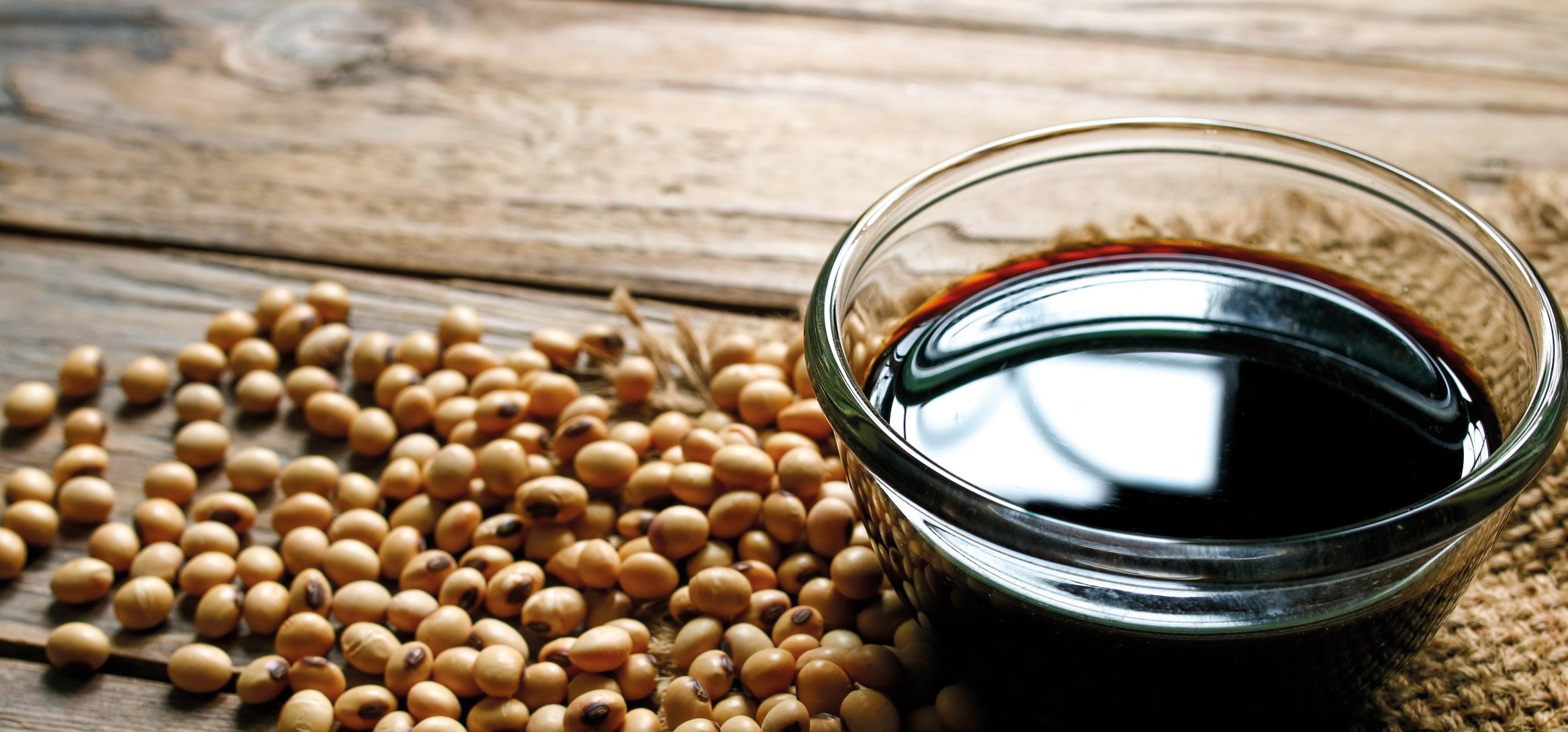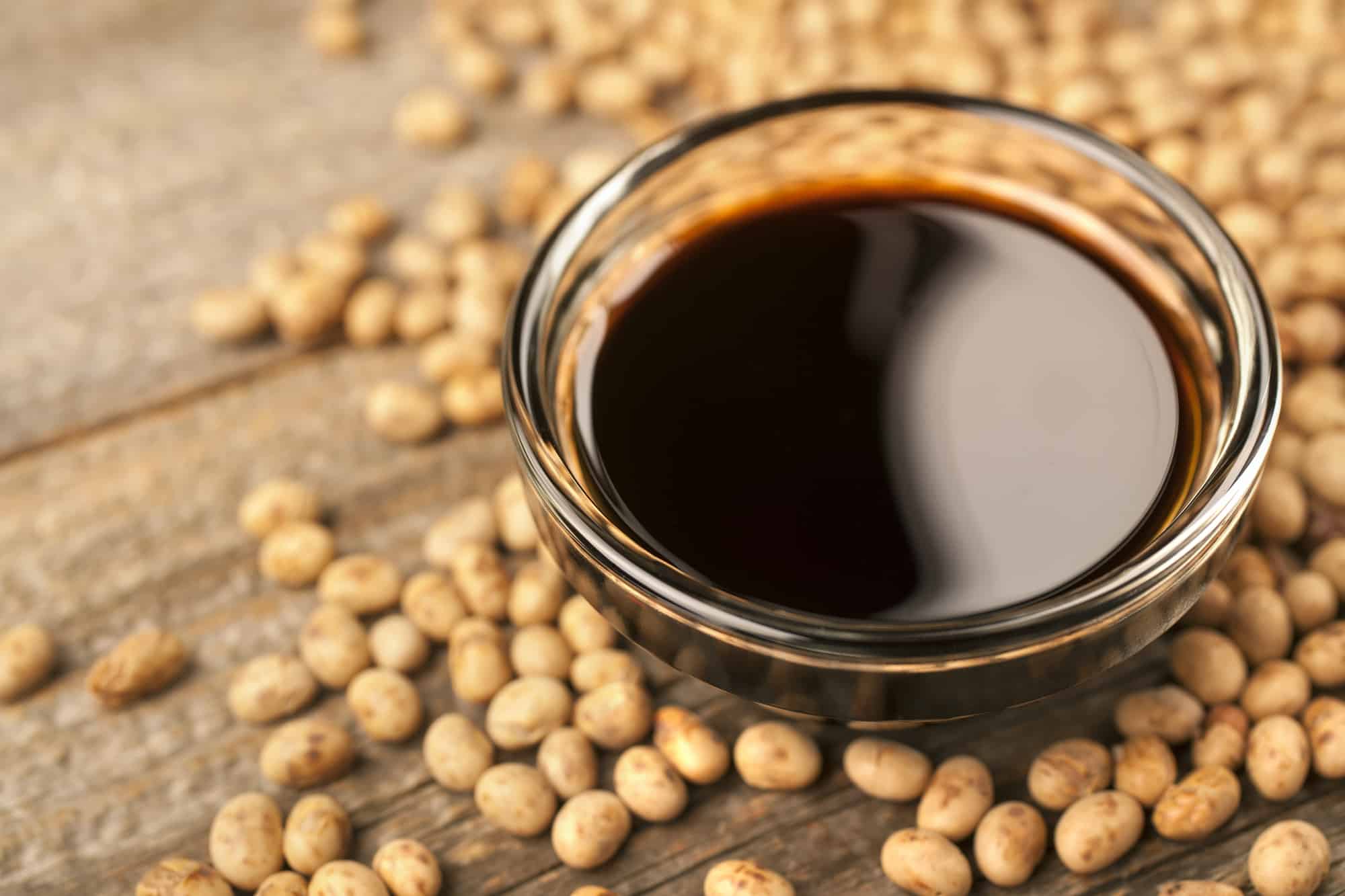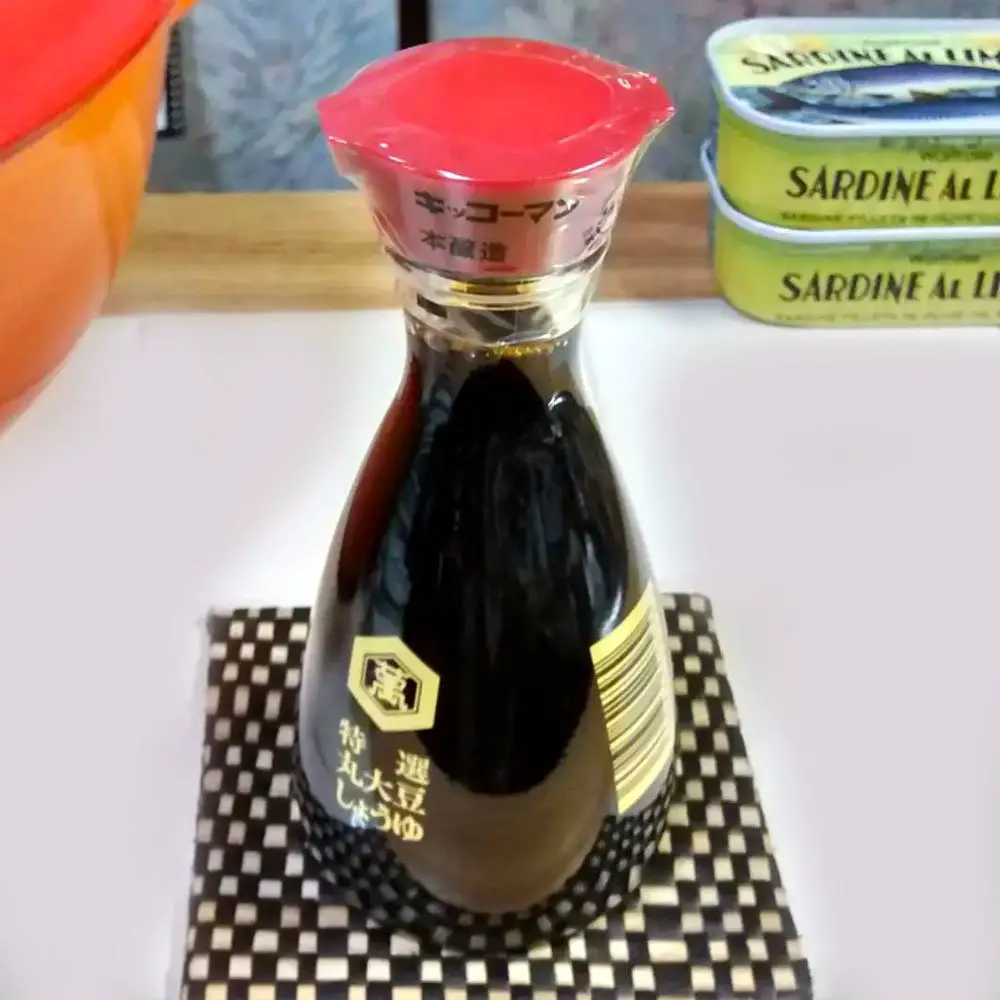Can Be High In Msg
Monosodium glutamate is a flavor enhancer. Its found naturally in some foods and often used as a food additive .
It is a form of glutamic acid, an amino acid that contributes significantly to the umami flavor of foods. Umami is one of the five basic flavors in food, often found in what is called savory food (
28 ).
Therefore, the presence of glutamic acid or even added MSG in soy sauce is probably no cause for concern.
Summary MSG and its free form, glutamic acid, are an important part of the appealing umami taste of soy sauce. Although MSG was once thought to cause headaches, recent reviews suggest this isnt the case.
Soy Sauce Taste Characteristics
This highly versatile condiment brings out the full flavors of many different ingredients, offers tastes and aromas that further fuel the appetite, and even adds color to prepared dishesit’s rare to find an ingredient or food that doesn’t go well with soy sauce. Soy sauce is used widely in Japanese cooking as well as Western cuisine, Chinese cuisine and others around the world. So what exactly makes soy sauce so versatile? There are two factors: its possession of all five tastesumami, sweetness, saltiness, bitterness and sournessand its more than 300 different aromatic variations. This combination of five taste characteristics and aromatic properties adds richness and depth to foods’ flavors.
Bringing Out Ingredient Tastes Vs Adding Soy Sauce Flavor
Adding soy sauce to cooking ingredients and foods can change how they taste.Lighter, saltier-tasting soy sauces bring out the delicious tastes of different things and can be used in much the same way as salt and lemon seasonings. These types are particularly good for whitefish, simmered dishes, soups and so forth.However, the saltiness-centric taste of light soy sauce may produce a final result that feels lacking when used with steak, tuna sashimi and other such ingredients, in which case a richer-tasting, umami-rich soy sauce is better because it complements and blends well with the foods.
Also Check: Raising Cane’s Sauce For Sale
Do You Know Your Soy Sauces
My mother always kept a gallon of Kikkoman Soy Sauce in a kitchen cubby. She grabbed the large container whenever she needed soy sauce for marinades, fried rice or dipping sauces. Later, as I began cooking Korean dishes for myself, I’d buy the same soy sauce brand. I didn’t think too much about different types of soy sauce until I started buying other brands.
Most recipes don’t specify the type of soy sauce to use, but they can vary wildly in flavor, texture, and appearance. Here’s a primer on what’s out there, along with the best uses for each.
All Soy Sauces Aren’t Created Equal

People may not realize that there is a significant difference between Japanese and Chinese soy sauce. What most people think of as soy sauce in the classic Kikkoman bottle is the Japanese style, called shoyu, notes Serious Eats. Chinese soy sauce, or jiangyou, according to Culture Trip, is made mostly the same way. However, Chinese soy sauce doesn’t contain any wheat, only soy, so it has more of a bite and lacks the sweetness that Japanese soy sauce gains from wheat. It also tends to be thicker than Japanese soy sauces, according to Serious Eats.
There are also different styles of soy sauce. According to Quartz, soy sauce is the third most popular condiment in the United States, and comes in light and dark versions, with low sodium options available as well. While the differences aren’t huge, dark soy sauce tends to be thicker, darker, and less salty, while light soy sauce has a lighter flavor and color, is thinner in texture, and a little heavier on the salt .
Read Also: Campbell’s Creamy Garlic Butter Chicken Oven Sauce
Contains Wheat And Gluten
Many people are unaware that soy sauce can contain both wheat and gluten. For people with wheat allergies or celiac disease, this could be problematic.
Studies have found that both soy and wheat allergens are completely degraded in the soy sauce fermentation process. That said, if you are not sure how your soy sauce has been produced, you cannot be sure it is free from allergens .
The Japanese soy sauce tamari is often regarded as a wheat- and gluten-free soy sauce alternative. While this can be true, some types of tamari may still be made with wheat, though with smaller amounts than are used in other types of soy sauce .
It is important to check the ingredients label for wheat and look for soy sauce products that are specifically labeled as gluten-free. Most major brands carry a gluten-free variety.
When youre eating out, its best to double check what brand of soy sauce the restaurant is cooking with and ask if they have a gluten-free variety.
If you are unsure, it may be better to choose a dish not cooked with soy sauce.
Summary Soy sauce contains wheat and gluten, and even the tamari type may still contain some wheat. If you are allergic to wheat or have celiac disease, look for gluten-free soy sauce and always check the ingredients list.
Where To Buy Soy Sauce
Find light soy sauce in the supermarket in the Asian foods section or condiments section. Well-stocked markets should also have dark soy sauce and tamari. You can find traditionally fermented varieties at international grocers, along with lesser-known types, like white soy sauce.
Don’t Miss: Stonewall Kitchen Garlic Rosemary Citrus Sauce
Japanese Soy Sauce Was Born In The Kansai Region
The soy sauce manufacturing methods that is said to have been born in Kishu Yuasa kept on advancing after that. Around 1580 , Tamai soy sauce, thought to be the first soy sauce vendor in Japan, started selling soy sauce and miso paste. There is a record from 1588 of approximately 18,000L of tamari soy sauce being sent from Kishu to Osaka. This suggests that soy sauce was already a daily necessity among the townspeople of Osaka. In Kanto, on the other hand, soy sauce had arrived but was not being manufactured. It was being brought from Kansai. It was called Kudari soy sauce, which means it had been brought from the capital.
Bacon Egg And Shrimp Fried Rice
What You Need
- Light soy sauce 1 tablespoon
- Peanut or vegetable oil 1 ½ tablespoons
- Minced garlic 1 clove
- Cooked jasmine rice 2 cups
- Diced pancetta or bacon 4 ounces
- Peeled and grated fresh ginger 1 teaspoon
- Fresh or frozen peas 4 ounces
- Toasted sesame oil 1 teaspoon
- Chopped scallions 2
Process
Don’t Miss: Buffalo Wild Wings Hot Sauce
Soy Sauce Buyers Guide
To rank our top three soy sauce brands, we had to consider these factors: The price, the taste, the packaging, and the quality of the product. We had to purchase at least fifteen brands of soy sauce, handing them all out to our testers so they can try it out. Then we narrowed it down bit by bit until we got to three brands. During the tasting process, we learned that there is actually a difference between authentic fermented Japanese soy sauce than the ones that were made in factories. All of the soy sauce brands were paired up with our favorite dishes such as sushi, and some used it as an ingredient in their cooking, like Shoyu-based ramen.
What Makes A Soy Sauce Suitable For Your Exact Needs?
Does Soy Sauce Go Bad
Soy sauce is notoriously packed with sodium which acts as a natural preservative. Soy sauce, unopened, can last on a pantry shelf for roughly three years before the flavor begins to deteriorate. There is no way to tell if soy sauce has gone bad without opening it.
Once opened, soy sauce will degrade in quality while creating an environment that is potentially conducive to host bacteria. Opened soy sauce should be stored in the refrigerator where it can last for up to two years. After roughly two years, there will be a massively diminished flavor profile while the potential for mold growth has increased.
There are no major longevity differences between traditional and synthetic soy sauces.
Read Also: Best Tzatziki Sauce To Buy
How To Store Soy Sauce
It is best to use opened soy sauce within three months, but you can keep it refrigerated for up to six.
The flavor will slowly deteriorate over time, and the color of your sauce may darken if exposed to too much air however, this does not mean that the product has gone bad or spoiled.
Unopened soy sauce can be stored in a cool, dark place for up to 3 years.
Keep the soy sauce away from light, heat, and moisture.
The Arrival Of Common Soy Sauce To The Taste Of Edoites

With the start of the Edo period and the reigns from Genroku to Kyoho , the population of Edo was growing. The production of strongly flavored soy sauce, to the taste of Edo citizens, began. The kudari soy sauce from Kansai was countered by jimawari soy sauce, which was the equivalent of modern common soy sauce. The booming centers of soy sauce making from that time were the cities of Noda and Choshi in Chiba prefecture. They are situated on the broad flat land of the Kanto plain, where soy beans and wheat are grown, and had the advantage of waterways such as the Tone and Edo rivers, so they became the centers of soy sauce production in Kanto. They are still the biggest production regions for common soy sauce.
You May Like: Keto Friendly Bbq Sauce Walmart
How Soy Sauce Is Made
While it is possible to make quick, low-cost soy sauce using a chemical process, real soy sauce is cooked, aged, and processed over the course of months. The soybeans, wheat, and water are cooked into a mash. They are then aged for a few days with Aspergillus, a type of fungus, to propagate koji mold. The resulting shoyu koji is mixed with brine and aged for several months. When it has been properly aged, the shoyu koji is pressed, resulting in raw soy sauce. Finally, the raw soy sauce is cooked to adjust color, flavor, and aroma.
Where Did It All Begin
To prepare for winter, people of prehistoric Asia preserved meat and fish by packing them in salt. The liquid that leached from the preserved meat was subsequently used as a base for savory broths and seasonings.
In the sixth century AD, the practice of Buddhism flourished in both Japan and China. Many Buddhists practiced vegetarianism, which created the need for a meatless seasoning. One such seasoning consisted of a salty paste of fermented grains including soybeans, the first known product to resemble modern soy sauce.
While studying in China, a Japanese Zen priest came across this new seasoning. Upon returning to Japan, the priest began making his own version and introduced it to others. Over the years, the Japanese modified the ingredients and brewing techniques. One change was the addition of wheat in equal proportion to the soybeans. This produced a soy sauce with a more balanced flavor profile that enhanced food flavors without overpowering them.
During the 17th century, legend has it that the original recipe for Kikkoman Soy Sauce was developed and brewed by a resourceful widow in Noda, Japan. Through the centuries, the soy sauce grew in popularity outside the borders of Japan.
Today, Kikkoman Soy Sauce is the best-selling and most widely recognized brand name of soy sauce in the United States, prized for its versatility as a flavor enhancer, sauce and marinade base, and table-top condiment.
500 B.C. – Soy sauce was discovered in China.
- Story of Soy Sauce
Read Also: How To Get Bbq Sauce Out Of Clothes
Homemade Soy Sauce From Scratch
I have more than just homemade soy sauce from scratch, check out more homemade recipes at the end of the page.
This sauce is so tasty and makes your good meals outstanding. The flavor is rich and flavorful. It is so easy to make. I’ve included my homemade vegan soy sauce recipe below.
This is the description of what soy sauce is at wikipedia.org:
Soy sauce is a condiment made from a fermented paste of boiled soybeans, roasted grain, brine, and Aspergillus oryzae or Aspergillus sojae molds. After fermentation, the paste is pressed, producing a liquid, which is the soy sauce, and a solid byproduct, which is often used as animal feed.
I am so thankful that I make my own – I bet you are happy you came across this page aren’t you?
/10easy Process To Make Soy Sauce At Home
Soy sauce is an Asian condiment that is made by fermenting soybeans and has a deep and intense flavour. Apart from adding a distinct taste to a variety of dishes like noodles and curries, soy sauce also lends them a beautiful colour. Ingredients of a typical soy sauce include soybeans, water, wheat, salt and a strain of fungus to kickstart fermentation. Many brands of soy sauce available in the market have high amounts of sodium, thus negatively impacting health. Fortunately, you can make your own soy sauce at home with some patience, time and very little ingredients. Heres how…
Recommended Reading: Low Carb Sugar Free Bbq Sauce
Varieties Of Soy Sauce
The soy sauce aisle in the grocery store can overwhelm anyone.
There are hundreds of varieties with different colors and flavors to choose from.
Most often called regular by Americans, light soy sauce is a good all-purpose seasoning and condiment that traditionally accompanies sushi dishes.
Dark soy sauce is a much sweeter variation of the original and thickened with molasses or caramel for even more flavor.
Have you ever tried a low-sodium soy sauce? It is made by an acid hydrolyzed vegetable protein method which does not require bacterial cultures.
Low sodium varieties are becoming popular for people watching their salt intake, as they may be the ideal sauce of choice.
Tamari is a lighter alternative to soy sauce, boasting clean and light flavors that make it an excellent option for those who are following gluten-free or wheat-free diets.
It was created as the perfect substitute for people with gluten allergies.
White soy sauce balances a light, delicate flavor with the rich amber color.
The delicacy of this traditional Japanese variety is attributed to its higher wheat-to-soy ratio and lighter coloring.
Modern Soy Sauce Brewing
While traditional brewing of soy sauce has been perfected over generations, it is in steady decline amongst manufacturers as newer methods for quickly producing soy sauce have been invented to meet the high global demand for it. One of these modern methods is acid hydrolysis, which does not involve any fermentation and thus cuts down the production time for soy sauce from months to merely days.
With this method, defatted soy meal is boiled under high pressure with hydrochloric acid to rapidly break down the soy proteins, then the mixture has to be neutralised with sodium hydroxide before it is filtered and refined. Because acid-hydrolysed soy sauce has not undergone fermentation, it does not develop the aromatic compounds like esters, alcohols and carbonyl compounds that give soy sauce much of its zest and perfume so instead, additives like salt, caramel, and corn syrup are added to improve the appearance and taste of the soy sauce.10 It is this cheaper and long-lasting type of soy sauce that you usually find in small packets alongside pre-packaged foods.11 Manufacturers also sometimes combine acid hydrolysis and fermentation methods to produce an affordable sauce with some of the authentic flavour of long-brewed soy sauce.
How do you like to use soy sauce? Tell us in the comments below!
Read Also: G Hughes Sugar Free Dipping Sauce
Where Does Soy Sauce Get Its Flavor
Soy sauce is a powerful flavor in any dish, but its more than just salty. This sauce typically contains monosodium glutamate, also known as MSG. This type of sodium gives soy sauce a savory flavor called umami.
MSG has been in the spotlight for decades. People reported negative symptoms after eating food containing MSG. The most common use example is in Chinese food, which uses it for flavoring. The news of negative symptoms started a widespread aversion to Chinese food called the Chinese Restaurant Syndrome.
Continued
The symptoms were probably caused by an allergic reaction to MSG or eating too much of it. Several studies have shown no direct link between MSG and those symptoms. Simply eating it in moderation like you would sodium is fine.
Umami is the fifth flavor alongside sweet, salty, sour, and bitter. It is a savory flavor that is often associated with meat, cheese, and certain vegetables like mushrooms. Soy sauce, made with MSG and filled with umami flavor, can be a great low-sodium flavoring option.
Fermentation And Aging Of Moromi

The shoyu koji is moved to a tank and mixed with the salt-and-water solution. This mixture is called moromi, a kind of mash, which is then fermented and aged in the tank. It takes several months.
Various actions take place in the tank, including lactic acid fermentation, alcoholic fermentation by yeast and organic acid fermentation, all of which give the moromi the rich flavour, aroma and colour that are unique to soy sauce.
Recommended Reading: How To Prepare Ragu Sauce
